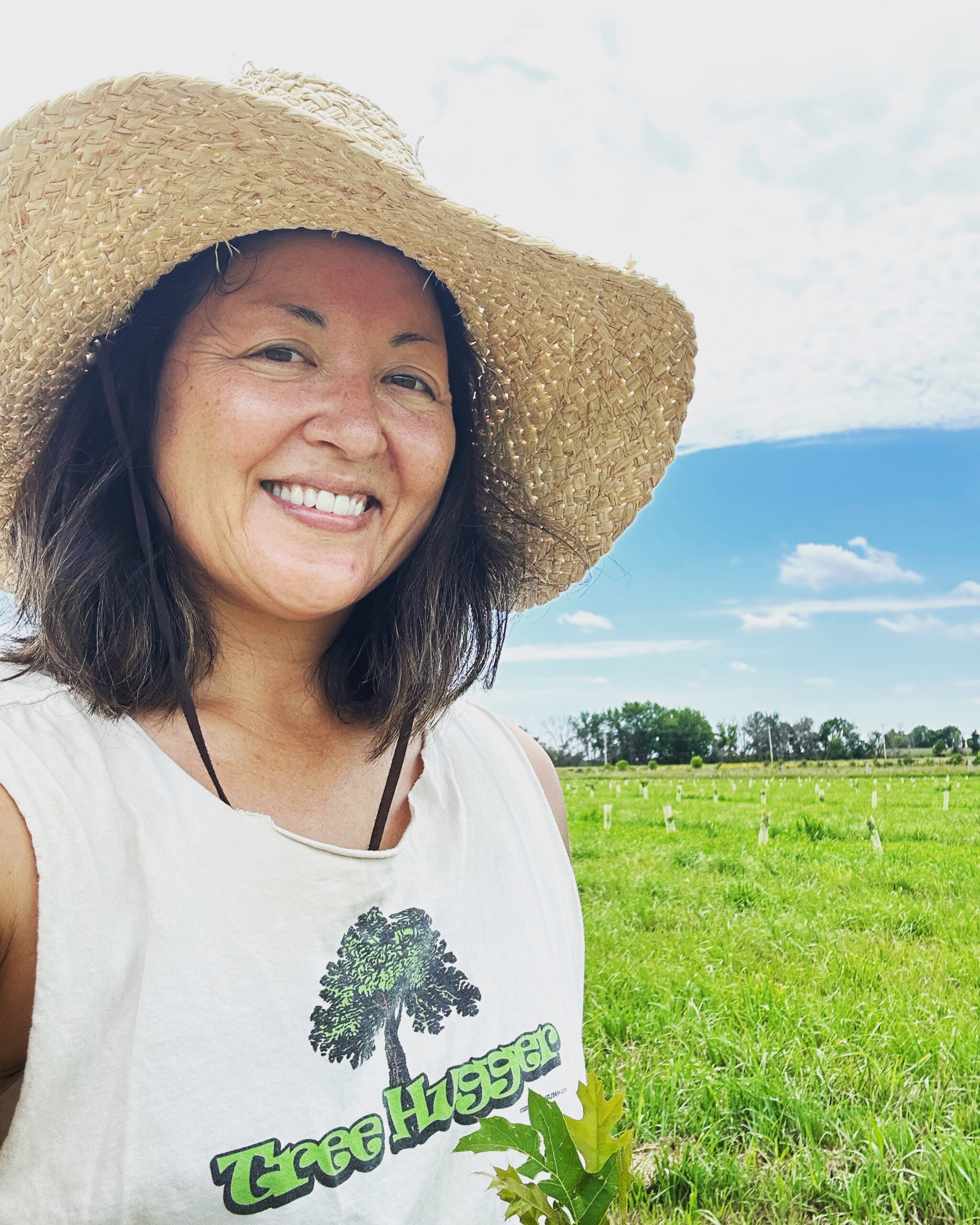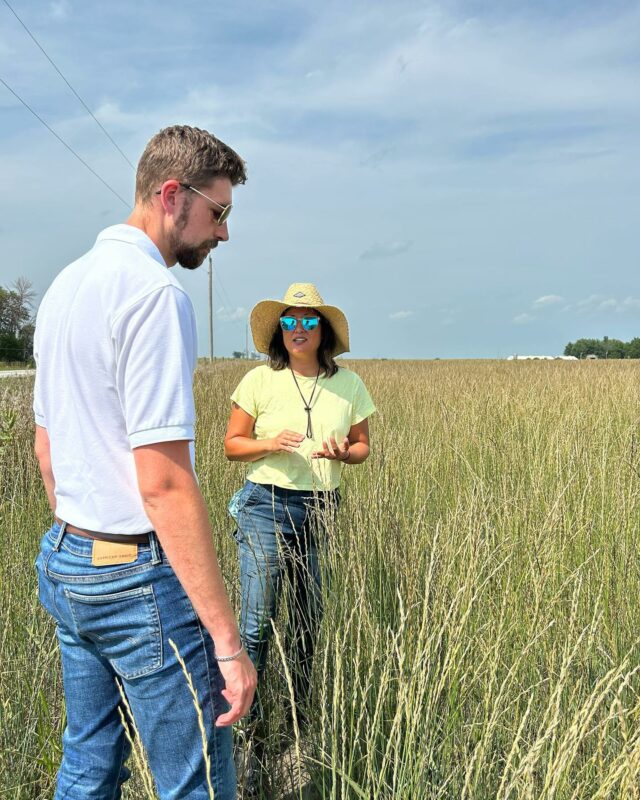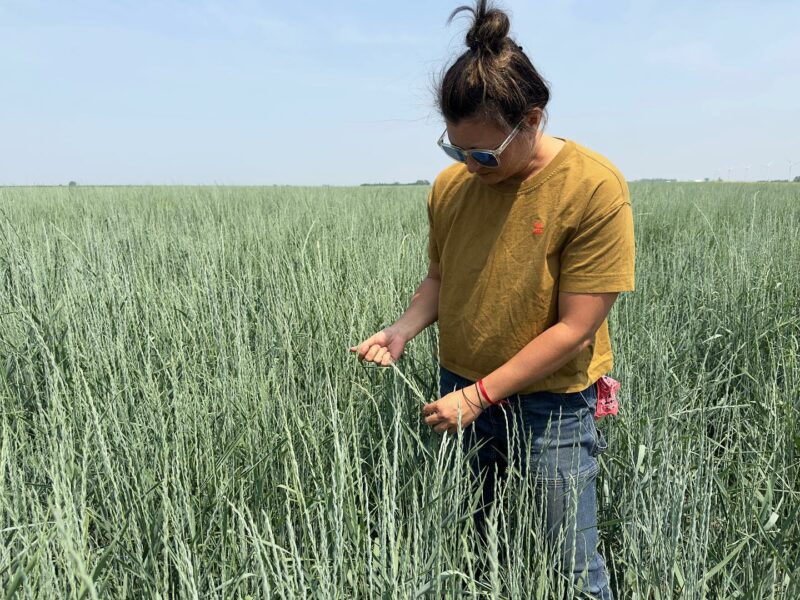Farmer and Climate Land Leader Wendy Johnson shared the following remarks at a panel discussion on the Farm Bill hosted by Taxpayers for Common Sense in February, 2024.

I am a farmer that sits in a few different worlds and sees the need for the diversification in the Midwest. I am a commodity farmer, an organic farmer and a grazier. I see how climate change impacts our commodity farm, and I see how our diversified farm is more resilient to these impacts.
Iowa has some of the richest soils in the world, but our soils are quickly being washed and blown away due to the intensive monocrops grown here along with stronger wind and rain events due to a changing climate. We are currently losing soil faster than at the height of the 1930s Dust Bowl.
Land in Iowa is valued based on how suitable it is to grow corn. The better the soil to grow corn, the more the land costs. The average Iowa farmer is a 60-year-old white male, and farmers make up less than 4% of the population. Yet, every small to mid-scale farmer is trying to stay in the business of farming, and it is proving itself to be more difficult each year. When you’re trying to stay in the business of farming and grow, you do what is supported.
When we think of growth in the Corn Belt, it means buying or renting more land. For example, there was a nearby farm that came up for sale. It had several fenced and hedgerowed sections, a perfect established layout for perennial forages for grazing or an organic farm. But to afford that farm and pay the bank each year, because of its high corn suitability rating I would have to grow corn on every acre almost every year to make my payments. It disincentives me to grow anything else. Even small grains in a crop rotation is a break-even crop, if that, and would be used to break pest cycles and offset tillage in an organic rotation. That farm got sold recently and guess what, they tore out the fences and the hedgerows and made it all one big field. They sold the home, windbreak and outbuildings separately so someone could have some country living without the farmland. Our rural communities have changed so dramatically due to the policies in place that incentivize “get big or get out.”

The infrastructure, the markets (i.e., ethanol plants, feed and grain co-ops, big processors), the agricultural policies including risk-mitigating strategies, and ag finance, are all in place to keep farmers growing corn and soy. It makes things easy. Add onto that an aging farmer population with little way in for farmers starting out, the increasing cost of land and property values due to corn, the increased costs for machinery and implements and our lack of ability to fix them ourselves, farmers’ competitive mindset based solely on production pitting us against each other, and we are on this downward spiral toward a few wealthy owning all the land – who will probably not be farmers. It also leads us to a lack of nutrition due to highly processed food, non- potable drinking water and desertification.
We have a complacency problem here in the Corn Belt. The “what ain’t broke, don’t fix it” mentality is caused by the protections in place to mitigate risk. But it is what is protected that is causing the issue. The policies in place only protect a few select crops. We can plant a crop of corn or soybeans and if it fails, we might make more than if we grew a decent crop, because of crop insurance and commodity protections in our Farm Bill. This kind of policy and protections for only a handful of crops does not take into consideration climate change. We are already seeing increased prices for crop insurance products due to increased risk. We are also seeing increased subsidization for commodities potentially grabbing more of the pie in this coming Farm Bill, pulling taxpayer money away from conservation programs that support practices that are proven to mitigate and adapt to a changing climate.

So what if we used these same tactics to promote diversity? Here are some solutions to the diversification barriers I shared:
- A policy shift to value the land differently. The land is now not affordable to new farmers to access. We can be growing so many different types of foods at scale here.
- State and federal policies that promote diversification, like subsidy reform not just for a select number of commodities but for local foods to our schools/hospitals/nursing homes/company cafeterias, and policies that value ecosystems and practices.
- If we are going to have federally subsidized crop insurance then it should be for all crops and livestock at similar levels.
- Investment in infrastructure to incentivize farmers to diversify, like machinery at local ag co-ops, regional distribution and aggregation of products, local storage to hold grains, mills, and processing facilities.
- Flexible ag finance that understands the fluctuations of a diverse rotation and the need for integration of livestock on the land. Regenerative agriculture requires a long-game, a long-term investment.
- A mindset shift of ag professionals from focusing on solely production to a focus on long- term resiliency.
- Public promotion of the connection between the food and fiber we buy and the soil it is grown in.
- Investment in seed research outside of corn and soy – we could potentially grow competitive oats, for example, if there was investment into seed genetics.
- Incentivize increases in soil organic matter with methods such as multi-crop rotations and grazing livestock.
- Disincentivize practices such as growing corn after corn after corn.
- And make these solutions hassle-free, no large amount of paperwork. Instead flip the status-quo, so that to grow corn on corn on corn and to use full-width tillage will require the paperwork.
What will come from this is diversity of crops grown, diversity of jobs, robust rural communities, more people on the land growing our food, fiber and energy, cleaner water, healthier food, a sense of community, reduction in emissions, resilience to weather volatility and most of all, abundance.